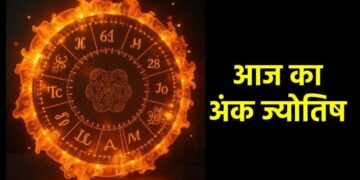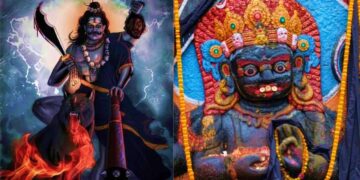Ayodhya News Desk !!! All preparations for the Surya Tilak of Lord Shri Ramlala in Ayodhya, Uttar Pradesh have been completed. On Wednesday, on Ram Navami, the rays of the sun will fall on Ramlala’s head at noon and his ‘Surya Tilak’ will be possible by an elaborate system of mirrors and lenses. This will be the first Ram Navami after the inauguration of the idol of Lord Ram in the new temple in Ayodhya by Prime Minister Narendra Modi on January 22. Scientists tested this system on Tuesday. It has been named “Surya Tilak Project”.
Council of Scientific and Industrial Research (CSIR)-CBRI Roorkee scientist Dr SK Panigrahi told PTI-Bhasha that the basic objective of the Surya Tilak project is to apply tilak on the head of Lord Ram’s idol on the day of Ram Navami. Under the project, the sun will shine on Lord Ram’s head at noon on the day of Shri Ram Navami. He said that under the Surya Tilak project, every year in the month of Chaitra, tilak will be applied on Lord Ram’s forehead with sunlight from 12 noon and every year the position of the sun changes in the sky on this day.
The date of Ram Navami is repeated every 19 years…
He said, “Detailed calculations show that the date of Shri Ram Navami is repeated every 19 years.” According to a senior scientist of the Council of Scientific and Industrial Research (CSIR)-Central Building Research Institute (CBRI), Roorkee, the size of the tilak applied is 58 mm. He said that the correct duration of the tilak on the middle part of Ramlala’s forehead is about three to three and a half minutes, of which the full lamp is two minutes.
Meanwhile, Shri Ram Janmabhoomi Tirtha Kshetra Trust member Anil Mishra said, ‘During Surya Tilak, devotees will be allowed to enter the Ram temple. For this, about 100 LEDs are being installed by the temple trust and 50 by the government. Which will show the Ram Navami celebrations, people will be able to watch the celebrations from wherever they are present.
Sharing his personal experience in setting up this unique apparatus, Dr. D. P. Kanungo, Chief Scientist, CSIR-CBRI, Roorkee said, “It has been meticulously planned, designed and executed to achieve really high accuracy.”






